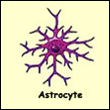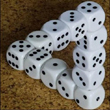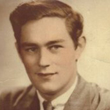Monday, 16 April 2012
Fewer Glial Cells Than You Might Think?
 Most neuroscience textbooks still state that the number of glial cells (non-neuronal cells, such as astrocytes) in the human brain is far higher than the number of neurons. The figure often given is 10 times higher, and some authors even speak of up to 50 times higher. But studies done over the past few years offer a far more conservative estimate: a ratio of around one to one. (more…)
Most neuroscience textbooks still state that the number of glial cells (non-neuronal cells, such as astrocytes) in the human brain is far higher than the number of neurons. The figure often given is 10 times higher, and some authors even speak of up to 50 times higher. But studies done over the past few years offer a far more conservative estimate: a ratio of around one to one. (more…)
From the Simple to the Complex | 1 comment
Monday, 9 April 2012
Better Optical Illusions
 Optical illusions are fascinating in many ways—they can create objects that cannot exist, movement in a static image, different colours with the same colour, and so on. They can also give us a better understanding of how the human visual system works, as witness this web site dedicated to the best optical illusions that scientists who study this subject have managed to devise in a contest that is held every year. (more…)
Optical illusions are fascinating in many ways—they can create objects that cannot exist, movement in a static image, different colours with the same colour, and so on. They can also give us a better understanding of how the human visual system works, as witness this web site dedicated to the best optical illusions that scientists who study this subject have managed to devise in a contest that is held every year. (more…)
The Senses | Comments Closed
Monday, 2 April 2012
Meditation Can Reduce Stress
 In a study published in 2007, people who practiced a method of meditation known as Integrative Body-Mind Training, or IBMT, for five days showed better attention and better ability to manage stress and its harmful effects than people in a control group who were given only relaxation training. (more…)
In a study published in 2007, people who practiced a method of meditation known as Integrative Body-Mind Training, or IBMT, for five days showed better attention and better ability to manage stress and its harmful effects than people in a control group who were given only relaxation training. (more…)
The Emergence of Consciousness | Comments Closed
Saturday, 24 March 2012
The Unforgettable Brain of an Amnesiac

The person who probably contributed more to our understanding of human memory than anyone else was Henry Molaison, who died on December 2, 2008 at the age of 82. No, Molaison wasn’t a neurologist. He was a patient who had both hippocampi surgically removed from his brain in 1953, when he was 27 years old, in an effort to reduce his severe epileptic seizures.
The operation succeeded in controlling his epilepsy, but had an unforeseen side effect: it took away his ability to remember new information about his life and the world (declarative memory). as well, thus revealing the extremely important role that the hippocampus plays in long-term memory. Subsequently, H.M. became the most studied patient in the history of neuroscience (he is known by his initials to protect his privacy), and he will continue to be studied for some time. Almost a year to the day after he died, his brain was sliced into nearly 2600 thin sections, which were than stained and captured in digital images that can now be accessed free of charge on the Internet. (more…)
Memory and the Brain | 1 comment
Friday, 23 March 2012
Our Blog Now On Line!

Here it is, The Brain from Top to Bottom blog. And it’s hard to miss, because we’ve built it right into the web site’s home page. Why? Because for us, the blog and the site are now inseparable, interactive parts of a whole, each referring you to the other for more information.
As you can see from the first post above, each week we will be providing a summary of a recent scientific study in the vast field of cognitive neuroscience. In that sense, this blog is just a series of posts like any other. But each summary will also include clickable text links to pages in The Brain from Top to Bottom that we have selected specifically to help you understand the study in question. Thus this blog provides yet another way of accessing the web site’s encyclopedic content. (more…)
From the Simple to the Complex, Uncategorized | 1 comment







